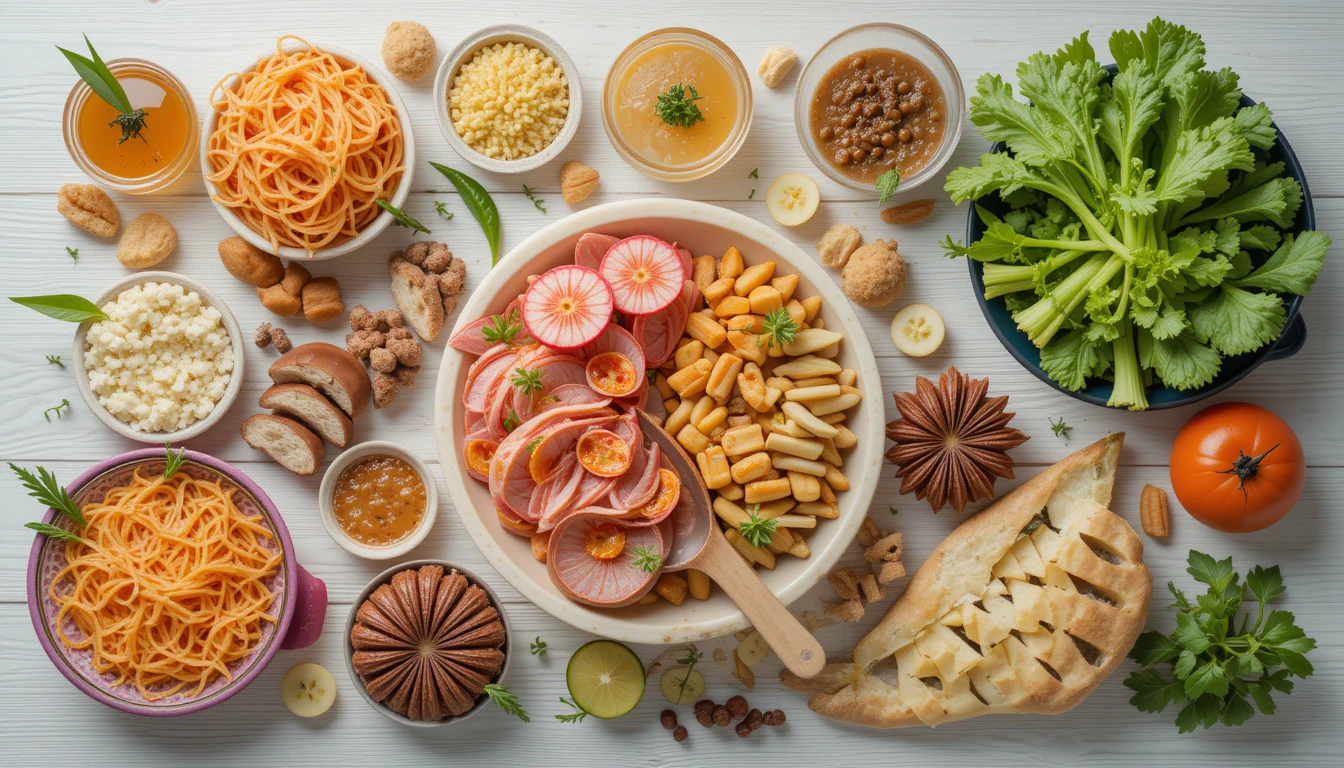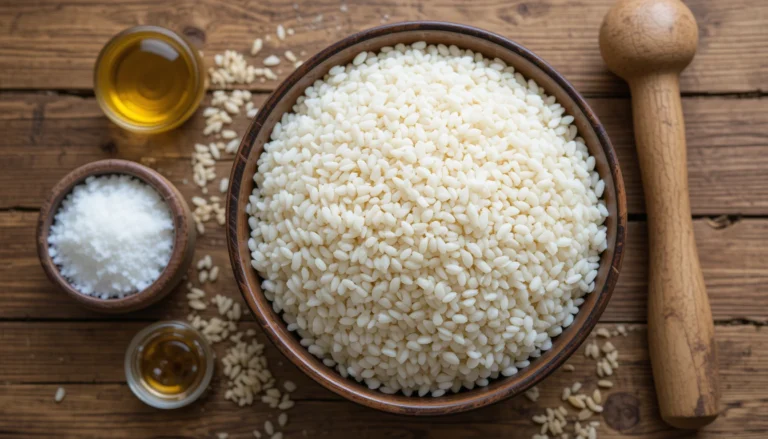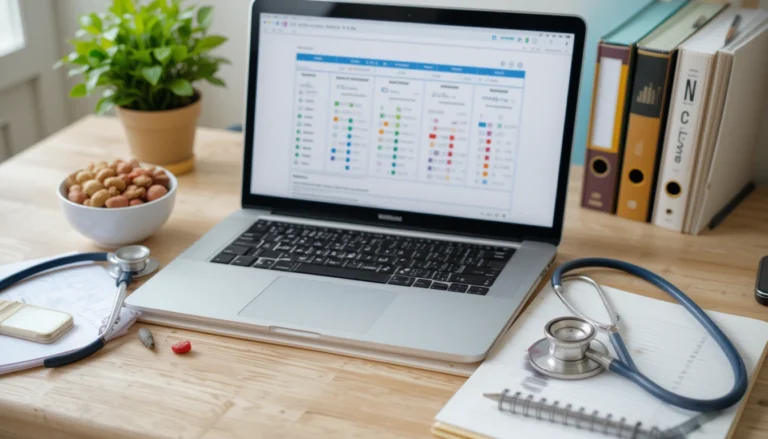Studies show eating certain foods can boost your brain’s dopamine by up to 20%. Research published in the Journal of Psychiatric Research shows that some nutrients help your body make more of this “feel-good” dopamine brain foods chemical.
If you feel tired, unfocused, or down, these dopamine foods might help you feel better, similar to how 10 Science-Backed Ways to Boost Your Brain can improve overall brain function.
What Is Dopamine and Why Your Brain Needs It
Dopamine is your brain’s motivation chemical. It helps you feel pleasure, stay focused, and keep a good mood. When dopamine is low, you might feel tired, unmotivated, or sad.
Food is a natural way to boost dopamine. Unlike pills, dopamine foods help your body make its own dopamine. These foods have nutrients that your brain needs to make dopamine or use it better.
| How Dopamine Affects You | When Levels Are Good | When Levels Are Low |
|---|---|---|
| Motivation | Ready to tackle goals | No interest, putting things off |
| Focus | Clear thinking | Brain fog, easily distracted |
| Mood | Positive outlook | Irritable, sad |
Key Points
- Dopamine helps with motivation, focus, and good mood
- What you eat affects how much dopamine your brain makes
- Some nutrients are building blocks for dopamine
- Good foods plus healthy habits work best
How Foods Boost Dopamine
Your brain makes dopamine from an amino acid called tyrosine. According to the Journal of Neural Transmission, eating foods rich in tyrosine gives your brain what it needs to make dopamine.
“What you eat becomes your brain chemistry. Food nutrients are building blocks for brain chemicals that affect how you think and feel.” — Dr. Emma Roberts, Brain Researcher
Besides tyrosine, your brain needs other helpers like vitamin B6, folate, and iron to turn tyrosine into dopamine. The National Institutes of Health research shows that without these nutrients, you can’t make enough dopamine, even with plenty of tyrosine. For more on essential nutrients for brain health, see our article on The Joy of Fermented Foods.
15 Top Dopamine Brain Foods for Better Mood and Focus
Protein-Rich Dopamine Boosters
1. Wild-Caught Salmon Benefits: High in tyrosine, omega-3s help dopamine receptors
This fatty fish gives you tyrosine (dopamine’s building block) and omega-3s that help dopamine receptors work better. A study in the American Journal of Clinical Nutrition found that people who eat fish regularly have less depression and better brain function. If you’re looking for more omega-3 rich options, check out 12 Best Mediterranean Diet Dinners for additional recipes.
How to eat it: Aim for 2-3 servings weekly. Try baking it with lemon and herbs.
Fish allergy? Try algae oil supplements for omega-3s, plus plant foods with tyrosine.
2. Eggs Benefits: Complete protein with all dopamine building blocks plus choline
Eggs give you complete protein including tyrosine, plus choline for better brain health. Studies show people who eat eggs do better on brain tests.
How to eat them: Have eggs for breakfast 3-4 times weekly. The protein helps keep dopamine levels steady all day.
Don’t eat eggs? Try tofu with nutritional yeast for similar nutrients.
3. Turkey Benefits: More tyrosine than most other meats
Turkey has more tyrosine than most other meats, making it great for dopamine. It also has vitamin B6, which helps make dopamine.
How to eat it: Use ground turkey in chili, meatballs, or burgers. The protein and complex carbs help keep dopamine steady.
Turkey allergy? Try beans mixed with seeds for similar amino acids.
4. Greek Yogurt Benefits: Protein-rich plus good bacteria for gut-brain health
Greek yogurt has lots of protein including tyrosine, plus probiotics for your gut. New research shows gut bacteria affect your brain chemistry.
How to eat it: Choose plain yogurt and add fruit or honey. The protein with natural carbs helps dopamine.
Dairy sensitive? Try coconut yogurt with added protein powder.
Plant-Based Dopamine Boosters
5. Bananas Benefits: Natural source of tyrosine plus vitamin B6
While bananas don’t give you dopamine directly, they have tyrosine and vitamin B6—both needed to make dopamine. They also give quick energy that can briefly boost dopamine.
How to eat them: Try slightly green bananas for less sugar and more resistant starch, which keeps blood sugar steady.
Banana allergy? Apples offer similar benefits.
6. Dark Chocolate (70%+ Cacao) Benefits: Triggers dopamine release plus contains tyrosine
Dark chocolate triggers dopamine release and provides tyrosine and other compounds that boost dopamine. Research in the British Journal of Clinical Pharmacology confirms chocolate improves mood. For a complete snack pairing, consider options from our 25 Cheap Healthy Snacks guide.
How to eat it: Stick to 1-2 squares daily. Pair with nuts for a perfect dopamine-boosting snack.
Caffeine sensitive? Eat chocolate earlier in the day.
7. Almonds and Walnuts Benefits: Plant protein with tyrosine plus vitamin E for brain protection
These nuts give you plant protein with tyrosine, plus vitamin E that protects brain cells. Walnuts have omega-3s that help dopamine receptors.
How to eat them: Eat 1/4 cup daily with fruit for a balanced snack.
Nut allergy? Try pumpkin or sunflower seeds instead.
8. Blueberries Benefits: Antioxidants protect dopamine-producing brain cells
Blueberries have powerful antioxidants that protect the brain cells that make dopamine. A study in the Journal of Agricultural and Food Chemistry shows these berries improve brain function and may slow brain aging. If you’re looking for more antioxidant-rich foods, check out our 15 Healthy Starbucks Drinks Under 100 Calories that include fruit-based options.
How to eat them: Add 1/2 cup to breakfast or snacks. Frozen berries work just as well as fresh.
Berry allergy? Try black grapes or cherries for similar benefits.
9. Green Tea Benefits: L-theanine boosts dopamine without jitters
Green tea has L-theanine, which boosts dopamine and has a calming effect. Unlike coffee, it gives mental alertness without anxiety.
How to drink it: Have 1-2 cups daily, before noon to avoid sleep problems. Brew at 175°F for best results.
Caffeine sensitive? Decaf green tea still has L-theanine.
Nutrient-Dense Dopamine Supporters
10. Leafy Greens (Spinach, Kale) Benefits: Folate needed for dopamine production
Leafy greens are rich in folate, a B vitamin crucial for making dopamine. The Journal of Psychiatric Research links low folate to mood problems. For creative ways to incorporate more greens, see our 10 Easy Greek Chicken Salad Recipes that feature leafy greens as key ingredients.
How to eat them: Include 2 cups daily, either raw in salads or lightly cooked with olive oil and garlic.
On blood thinners? Ask your doctor about how much to eat.
11. Pumpkin Seeds Benefits: Rich in zinc and iron, key dopamine helpers
These seeds have zinc and iron—minerals that help make dopamine. They also provide protein with tyrosine.
How to eat them: Add 2 tablespoons to salads, oatmeal, or yogurt daily. Light toasting improves flavor.
Seed allergy? Get these minerals from shellfish and other animal foods.
12. Turmeric (with Black Pepper) Benefits: Curcumin protects dopamine-making brain cells
The active part of turmeric, curcumin, helps protect brain cells that make dopamine and may even boost dopamine. According to Food Chemistry, black pepper makes it 2,000% more absorbable. To learn about other anti-inflammatory foods, explore our article on 7 Surprising Russet Potato Nutrition Facts which discusses surprising health benefits.
How to use it: Add 1/4 teaspoon with a pinch of black pepper to smoothies, soups, or golden milk. Eat with fat for better absorption.
On blood thinners? Ask your doctor before using a lot of turmeric.
13. Lentils Benefits: B vitamins and iron plus steady energy
Lentils provide steady energy with B vitamins and iron—nutrients needed for dopamine. Their fiber helps keep blood sugar stable, which helps dopamine stay steady.
How to eat them: Have 1/2 cup cooked lentils 2-3 times weekly. Mix with rice for complete protein.
Legume allergy? Try quinoa with a B vitamin supplement.
14. Avocados Benefits: Tyrosine plus healthy fats for brain cell structure
Avocados have tyrosine and healthy fats that support brain health. Research from the Journal of Nutritional Biochemistry shows these fats help maintain brain cells involved in dopamine production. For more healthy fat sources, check out 17 Amazing Bacon Nutrition Facts for a balanced view on different fat types.
How to eat them: Eat 1/4 to 1/2 avocado daily. Add to smoothies for creaminess without much flavor change.
Watching calories? Remember avocados are nutritious but high in calories.
15. Coffee (in moderation) Benefits: Increases dopamine temporarily
Coffee boosts dopamine release and temporarily makes dopamine receptors more sensitive. This works best when you drink a moderate, consistent amount.
How to drink it: Limit to 1-2 cups daily, before noon. Avoid too much sugar, which can cause energy crashes that drain dopamine.
Caffeine sensitive? Try decaf coffee, which still has helpful antioxidants.
Your Weekly Dopamine Diet Plan
You don’t need to change your whole diet to boost dopamine. This simple plan makes it easy to get more dopamine foods. For protein-rich options that support dopamine production, consider incorporating ideas from 15 High Protein Vegetarian Snacks That Boost Energy into your meal plan.
| Meal | Dopamine-Boosting Foods | Strategy |
|---|---|---|
| Breakfast | Eggs, yogurt, oatmeal with seeds, green tea | Include protein and complex carbs |
| Lunch | Turkey, salmon, lentil soup, leafy greens | Focus on tyrosine-rich proteins and vegetables |
| Dinner | Salmon, chicken, bean dishes, avocado | Moderate portions with quality proteins |
| Snacks | Nuts, dark chocolate, fruit, yogurt | Choose foods that provide both quick and lasting dopamine support |
Sample Day: Dopamine-Boosting Meals
Breakfast: Greek yogurt with blueberries, walnuts, and honey Why it works: Combines protein, tyrosine, antioxidants, and omega-3s
Mid-Morning: Green tea and 2 squares of dark chocolate Why it works: L-theanine supports calm focus while chocolate boosts dopamine
Lunch: Spinach salad with grilled turkey, pumpkin seeds, and olive oil dressing Why it works: Gives you tyrosine, iron, zinc, and folate—all needed for dopamine
Snack: Apple slices with almond butter Why it works: Provides steady energy without blood sugar spikes that can drain dopamine
Dinner: Baked salmon with turmeric-roasted vegetables and quinoa Why it works: Combines several dopamine precursors with compounds that protect brain health
Foods That Lower Dopamine
While adding dopamine-boosting foods is important, it’s also good to cut back on foods that can drain your dopamine. According to the Harvard Medical School, these foods can negatively impact brain chemistry:
Foods That May Lower Dopamine:
- Processed foods with trans fats – damage dopamine-producing brain cells
- Too much sugar – causes dopamine spikes and crashes
- Artificial sweeteners – may interfere with dopamine signals
- Too much alcohol – first boosts dopamine but then depletes it
- Highly processed carbs – cause blood sugar swings that affect dopamine
Instead of cutting these foods completely, try to eat less of them while adding more dopamine-supporting foods. For healthier alternatives to processed foods, our article on 10 Healthy Bread Alternatives offers great substitutions.
Beyond Food: Habits That Boost Dopamine
While food plays a key role in dopamine production, combining dopamine foods with these habits creates even better results. The American Psychological Association confirms these lifestyle factors have significant impacts on neurotransmitter function:
Top Dopamine-Boosting Habits:
- Regular exercise – 30 minutes daily improves dopamine receptor sensitivity
- Good sleep – 7-9 hours nightly restores dopamine receptors
- Sunlight – 15-20 minutes daily increases dopamine levels
- Meditation – 10 minutes daily reduces stress that drains dopamine
- Completing small tasks – finishing even small projects releases dopamine
Creating an approach that combines dopamine foods with these habits provides the strongest foundation for better mood, motivation, and focus. For more holistic wellness approaches, see our 10 Science-Backed Ways to Boost Your Brain article.
Frequently Asked Questions
How quickly will I notice effects from dopamine foods?
According to the Journal of Psychiatry & Neuroscience, some people notice small improvements in mood and focus within 1-2 days of eating more dopamine-supporting foods. However, bigger changes usually take 2-3 weeks of consistent diet changes as your brain adapts.
Can these foods help with diagnosed depression or ADHD?
While dopamine foods can help support medical treatment for conditions like depression or ADHD, they should not replace prescribed medications. The American Journal of Psychiatry research shows that nutritional approaches work best as part of a complete treatment plan developed with your doctor.
Can I get too much dopamine from food?
Foods alone typically can’t increase dopamine to harmful levels. Your body has natural systems that help maintain balance, according to the National Institute of Mental Health. However, combining high-tyrosine foods with certain medications, particularly MAO inhibitors, requires medical supervision.
How do dopamine foods interact with medication?
Some dopamine-boosting foods can interact with certain medications, particularly some antidepressants, Parkinson’s medications, and MAO inhibitors. The FDA recommends always talking to your doctor about potential food-drug interactions if you’re taking prescription medication. For natural approaches to complement medical treatments, our Mediterranean Keto Diet article discusses balanced nutrition plans.
Feed Your Brain, Improve Your Mood
You now have a complete guide to foods that naturally boost your brain’s dopamine. Remember these key points:
- Focus on tyrosine-rich foods — this amino acid is dopamine’s main building block
- Include helper nutrients — vitamin B6, folate, iron and others help convert tyrosine to dopamine
- Be consistent — your brain needs regular nourishment for stable dopamine production
What you eat directly affects your brain chemistry. By choosing foods that support dopamine production, you’re actively improving your mood, motivation, and focus.
Start by adding just 2-3 dopamine foods this week. Pay attention to changes in how you feel. Small, consistent changes often lead to the best long-term improvements in brain health and overall well-being.



Leave a Comment